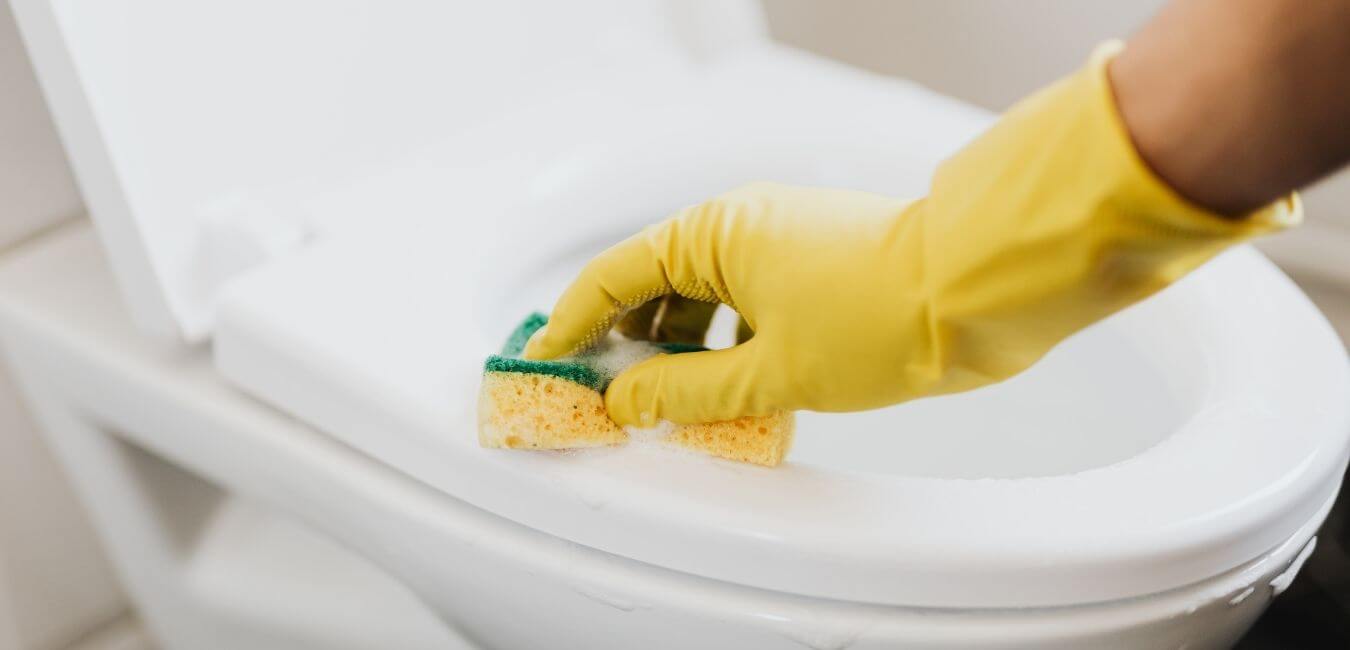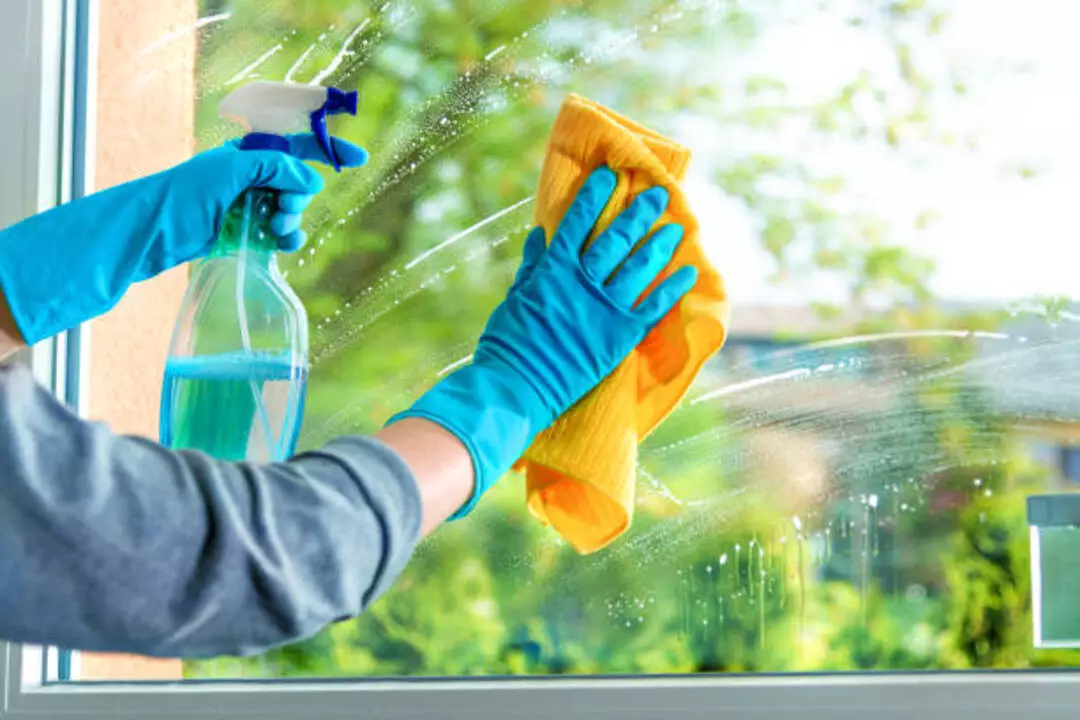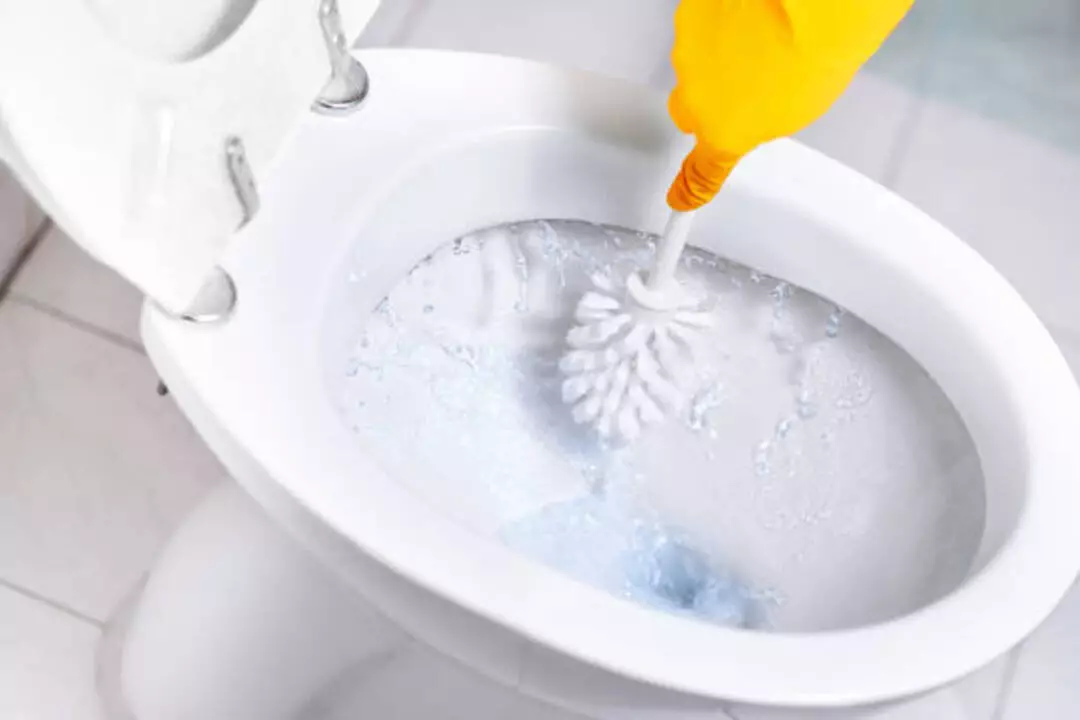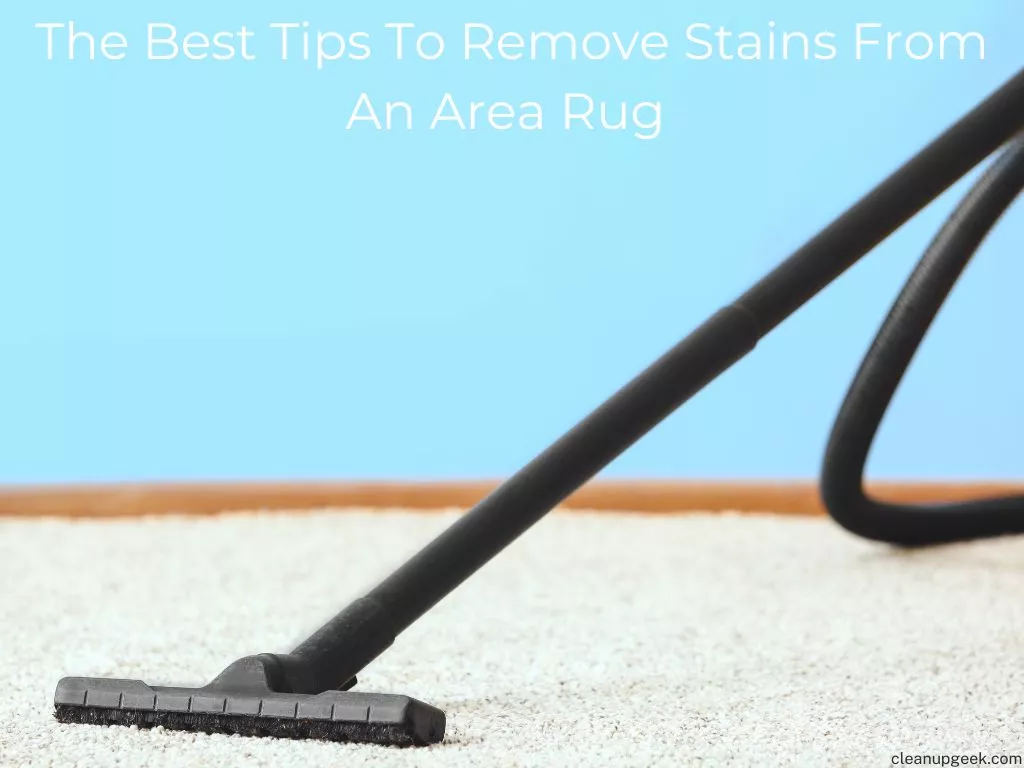Many of us accumulate belongings over time, and it can be tough to let go of sentimental items or things we might need ‘someday.’ But the truth is, excess stuff can weigh us down mentally and physically.
That’s why I’ve put together 23 tips for decluttering your indoor space and maximizing your freedom. I know firsthand how overwhelming it can feel to tackle a big decluttering project. But trust me, the benefits are worth it.
With less stuff taking up physical space in your home, you’ll have more room to think, create, and relax. And with fewer decisions to make about what to keep or get rid of, you’ll free up mental energy as well.
So let’s dive into these tips together and start reclaiming our indoor spaces.
Strategies to Maximize Your Indoor Space

1. Starting With A Plan
Did you know that the average American household contains over 300,000 items? That’s a lot of stuff to manage! If you’re feeling overwhelmed by clutter and struggling to make the most of your indoor space, it’s time to take action.
By starting with a plan, you can declutter your home and create a more organized, spacious living environment. Planning strategies are key when it comes to decluttering. It’s important to identify your priorities and set achievable goals for yourself.
This might involve breaking down larger decluttering projects into smaller, actionable plans that you can tackle one at a time. You’ll also need to schedule dedicated time for decluttering so that you can stay on track and hold yourself accountable.
To ensure that you stick to your decluttering goals, consider implementing some accountability measures. This might involve enlisting the help of a friend or family member who can provide support and encouragement along the way. You might also want to track your progress using a journal or spreadsheet so that you can see how far you’ve come over time.
With these planning strategies in place, you’ll be well on your way toward creating the clutter-free home of your dreams. As we move into the next section about setting realistic goals, it’s important to remember that success is all about taking small steps toward achieving larger objectives.
By starting with a solid plan and holding yourself accountable for your progress along the way, you’ll be able to accomplish great things when it comes to decluttering your living space. So let’s dive in and explore some goal-setting techniques that will help you make meaningful progress towards creating a more organized home.
2. Setting Realistic Goals
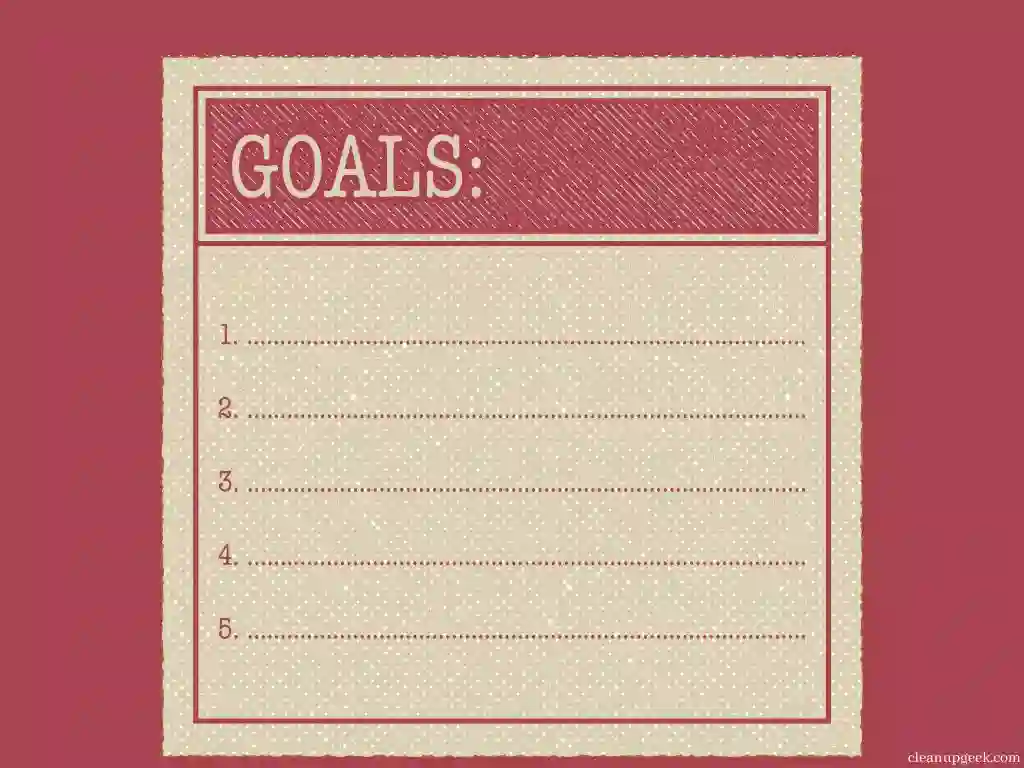
When it comes to decluttering, setting realistic goals is key. It’s easy to get overwhelmed by the amount of stuff you have and the thought of getting rid of it all. But by breaking down your decluttering process into manageable chunks, you’ll feel less stressed and more motivated to keep going.
Time management is also important when setting goals for decluttering. Make sure you set aside designated blocks of time each day or week to focus on decluttering. This will help you stay on track and avoid getting sidetracked by other tasks or distractions.
Motivation techniques can help keep you focused and energized during the decluttering process. Consider creating a vision board or list of reasons why you want to declutter. This will remind you of your goals and keep you motivated when the going gets tough. Additionally, accountability partners can provide support and encouragement throughout the process.
Of course, there will always be obstacles along the way when trying to achieve your decluttering goals. But by setting realistic expectations, managing your time effectively, using motivation techniques, and enlisting support from accountability partners, you’ll be better equipped to overcome any challenges that arise.
Now that we’ve discussed goal setting, let’s move on to identifying problem areas in our homes that need decluttering attention.
3. Identifying Problem Areas
As you begin the process of decluttering, it’s important to identify problem areas that tend to accumulate clutter. These areas can vary from person to person, but some common hotspots include the entryway, kitchen countertops, and closets.
Take a moment to visualize these spaces in your home and notice any feelings of overwhelm or anxiety that arises.
Once you’ve identified your clutter hotspots, it’s time to start sorting through your belongings. It can be challenging to let go of items that hold sentimental value or have been with us for a long time. However, it’s important to recognize the difference between functional items that serve a purpose in our lives and non-functional items that take up space without being used.
Overcoming emotional attachment is easier said than done, but remember that letting go of physical clutter can also lead to mental clarity and emotional freedom.
By identifying your problem areas, recognizing functional vs. non-functional items, and avoiding future clutter traps, you’ll be on your way to creating a more spacious and simplified living environment.
4. Sorting Items By Category

When it comes to decluttering, organizing by category is one of the most effective methods. Not only does this make the process more efficient, but it also helps you see how much you have of each item and identify duplicates or unnecessary items. By grouping similar items, you can easily find what you need and maintain a clutter-free space.
There are many benefits to categorizing your possessions. First and foremost, it saves time and energy when cleaning up and looking for specific items. It also allows you to see how much you have of each category, allowing you to downsize and simplify your life. Common categories include clothes, books, kitchen supplies, sentimental items, and electronics.
To sort efficiently, start by gathering everything in one category together in a designated area. Then, go through each item one by one and decide whether to keep, donate/sell, or discard it. A handy table can help with this process:
Remember to be honest with yourself about what you really need or use on a regular basis. It may be helpful to set a limit on certain categories (such as 10 books or 5 kitchen gadgets) to prevent excess accumulation in the future.
Maintaining organization after sorting is key. Make sure every item has a designated home in your space and put things back where they belong after use. Regularly assess your possessions to avoid accumulating more clutter over time.
Next up: create a keep, donate, and discard pile without feeling overwhelmed.
5. Creating A Keep, Donate, And Discard Pile
As we sort through our belongings and decide what to keep, donate, or discard, it’s important to recognize the emotional attachment we may have to certain items. This attachment can cloud our decision-making process and make it difficult to let go of things that no longer serve us.
However, the benefits of donating go beyond just creating more space in our homes. Donating items that are still in good condition not only helps those in need but also benefits the environment by reducing waste. It can also bring a sense of joy and fulfillment knowing that our unwanted items are going to someone who will appreciate them. Involving family members in the donation process can also create a sense of unity and shared purpose.
When deciding where to donate, it’s important to do some research and find donation centers that align with your values and beliefs. Some centers specialize in specific types of donations while others accept a wide range of items. Utilizing online resources like donation center directories can make this process easier.
Now that we’ve created our keep, donate, and discard piles, we’re left with the challenge of maximizing the space we have available. Fortunately, there are many storage solutions available that can help us organize our belongings in a way that makes them easily accessible while also keeping them out of sight. Let’s explore some options for utilizing these storage solutions.
6. Utilizing Storage Solutions
Now that you’ve decluttered your space, it’s time to start utilizing storage solutions to keep things organized and tidy. Storage hacks can be a lifesaver when it comes to space-saving ideas. By using organizational tips and creative solutions, you can create a clutter-free living space.
One of the best storage hacks is to use furniture with built-in storage. For example, an ottoman or coffee table with hidden compartments is perfect for storing extra blankets or pillows.
Another great space-saving idea is to install shelves above doorways or windows. This not only adds additional storage space but also draws the eye upward, making the room appear larger.
When organizing your belongings, consider using baskets or bins to corral loose items like magazines or toys. Labeling these containers makes it easy to find what you need when you need it.
Additionally, hanging organizers on the back of doors can provide extra storage for shoes, scarves, and other accessories.
With these simple storage solutions, you’ll be amazed at how much more functional and spacious your home can feel. But why stop there? In the next section, we’ll explore even more ways to maximize vertical space in your home.
7. Maximizing Vertical Space
I used to live in a tiny studio apartment with barely enough room for my bed and a small table. It felt suffocating, and I knew I needed to maximize every inch of space. That’s when I discovered the beauty of maximizing vertical space.
By utilizing the walls, I was able to free up floor space and create a more functional living area.
When it comes to creative solutions for maximizing vertical space, DIY hacks are your best friend. One idea is to install floating shelves or bookcases that go all the way up to the ceiling. This not only adds storage but also makes the room feel bigger by drawing the eye upward. Another hack is using tension rods to hang curtains or towels for extra storage.
Small-space living requires smart room layout ideas and furniture arrangements. To make the most out of your vertical space, try placing taller furniture pieces against the walls such as bookshelves or armoires. You can even use a loft bed with built-in drawers or shelves underneath for added storage without sacrificing floor space.
Maximizing vertical space is one of the easiest ways to declutter and free up valuable square footage in your home.
Next, we’ll explore another creative solution: using under-bed storage.
8. Using Underbed Storage
When it comes to maximizing your indoor space, don’t overlook the potential of under-bed storage. It’s an often-underused area that can provide ample space for storing items you don’t use every day. With a little creativity and some smart planning, you can turn this wasted space into valuable storage real estate.
Creative solutions are key when it comes to making the most of your under-bed storage. Consider using clear plastic bins or bags to keep everything tidy and easily accessible. For larger items, like extra bedding or off-season clothing, try vacuum-sealed bags to save even more space.
Space-saving ideas abound when it comes to under-bed storage: from DIY options like building your own rolling drawers to budget-friendly options like repurposing old dresser drawers as slide-out storage containers.
And don’t forget about seasonal rotation! Store winter gear during the summer months and switch them out with summer clothes come fall.
Investing in multi-functional furniture is another great way to maximize your indoor space. Whether it’s a bed with built-in drawers or a coffee table that doubles as storage space, these versatile pieces can help you make the most of every square inch in your home.
So why not get creative and start exploring all the ways you can free up some much-needed space?
9. Investing In Multi-Functional Furniture
To maximize your indoor space, it’s essential to invest in versatile furniture that offers space-saving solutions. Multi-functional furniture is an excellent way to achieve this goal while maximizing functionality.
Look for pieces that serve more than one purpose, such as a sofa bed or a coffee table with built-in storage. This type of furniture can help you make the most out of your small space design without sacrificing style.
When shopping for multi-functional furniture, consider budget-friendly options that won’t break the bank. Many retailers offer affordable pieces that are still stylish and functional. You can also find second-hand options on online marketplaces or local thrift stores. Don’t be afraid to get creative and DIY your own multi-functional furniture using repurposed materials.
By investing in multi-functional furniture, you’ll be able to create a more flexible living space that adapts to your needs. This will give you the freedom to rearrange your room as often as you like without feeling constrained by bulky or immobile pieces.
In the next section, we’ll explore how making use of wall space can further enhance your small space design strategy.
10. Making Use Of Wall Space
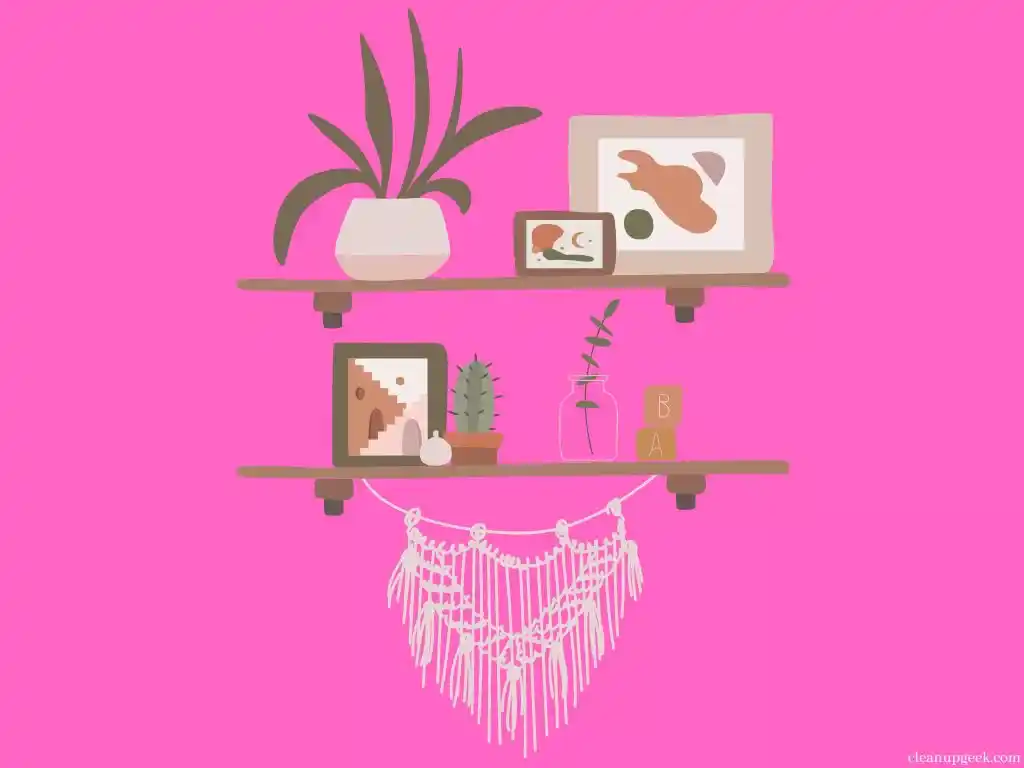
Investing in multi-functional furniture is a great way to maximize your indoor space, but don’t forget about utilizing your walls!
Wall decor not only adds character to a room, but it can also serve as a functional aspect of storage. Shelving ideas like floating shelves or mounted bookcases can provide extra storage space for books, plants, and decorative items without taking up floor space.
Hanging organizers can also be a lifesaver for small spaces by providing a designated spot for jewelry, hats, and other accessories.
DIY projects are another way to make use of your wall space while adding a personal touch to your home. You can create your own shelving units using reclaimed wood or pipes for an industrial look. Repurposing old crates or pallets into wall decor or shelves is also a budget-friendly option. Adding hooks or pegboards to the walls can provide additional storage for jackets, bags, and tools.
Maximizing small spaces requires creativity and strategic planning. Utilizing wall space is just one way to achieve this goal. By incorporating shelving ideas, hanging organizers, and DIY projects into your home decor, you’ll be able to free up floor space and declutter your living areas.
In the next section, we’ll explore how utilizing door space can further enhance the functionality of your home.
11. Utilizing Door Space
Are you tired of the clutter taking over your home? Well, have no fear because the door is here! Yes, that’s right, doors can be a game-changer when it comes to maximizing your indoor space. Don’t believe me? Let me show you how utilizing door space can transform your home.
Over-the-door storage and door-hanging organizers are two creative door solutions that can help declutter your living space. These nifty contraptions allow you to store items vertically, freeing up valuable floor space. Not only are they practical, but they also come in a variety of designs and colors that can complement any decor style. Check out this table for some inspiration on how to use over-the-door storage and hanging organizers:
| Type of Organizer | Items to Store | Benefits |
|---|---|---|
| Shoe organizer | Shoes, hats, scarves | Keeps footwear off the floor and easily accessible |
| Jewelry organizer | Jewelry, hair accessories, sunglasses | Prevents tangles and breakage while keeping accessories visible |
| File organizer | Important documents, bills, magazines | Creates a central location for paperwork |
By utilizing these door storage options, you’ll not only declutter your home but also add functionality and style.
So there you have it – decluttering with doors is not only possible but also easy and fun! With over-the-door storage and hanging organizers at your disposal, maximizing door space has never been easier. But why stop there? In the next section, we’ll explore how creating a command center can take your organizational skills to the next level.
12. Creating A Command Center
One of the best ways to maximize your indoor space is by creating a command center. This designated area in your home can help you stay organized and productive while also serving as a design inspiration. With some organization tips, DIY projects, time management, and productivity hacks, you can create a personalized command center that works for you.
Firstly, choose a spot in your home that is easily accessible and convenient for daily use. It could be a corner of your kitchen, a wall in your entryway, or even an unused closet.
Next, start by decluttering the area and removing any unnecessary items that don’t belong in the command center. Once you’ve cleared out space, it’s time to think about what items you want to include.
Consider incorporating a 3 item numeric list into your command center to keep it functional and stylish. For example, hang a bulletin board where you can pin important notes and reminders. Use hooks or baskets to store keys or other small items that tend to get lost easily. Finally, add a calendar or planner so that you can keep track of important dates and deadlines.
By creating a command center in your home, you’ll be able to stay on top of tasks and appointments with ease. With some simple DIY projects and design inspiration, you can customize your command center to fit your unique needs and style. Designating a space for everything will help keep clutter at bay and free up more space in your home for other activities.
13. Designating A Space For Everything
Creating a command center was just the first step toward maximizing efficiency in your home. Now it’s time to tackle the chaos head-on by designating a space for everything.
This may seem like an impossible feat, but trust me, it can be done.
First, start streamlining your possessions by asking yourself if each item is truly necessary or if it’s just taking up valuable space. Donate or sell anything that no longer serves you and only keep what brings value to your life.
Next, focus on organizing chaos into designated spaces. This means finding a place for everything and sticking to it consistently.
Simplifying life is all about clearing space physically and mentally. When you have less clutter in your home, you’ll feel lighter and more free. You’ll also save time since you won’t have to search for items or clean around excess belongings.
So take the time to develop a system that works for you and stick with it. Your future self will thank you for the extra breathing room!
Transitioning into developing a cleaning routine, remember that keeping up with organization is key to maintaining a clutter-free space.
In order to make decluttering a habit, incorporate daily tasks such as putting things back where they belong and doing a quick tidy-up before bed each night.
By setting aside designated times for cleaning and staying consistent with them, you’ll be able to enjoy your newly cleared space without feeling overwhelmed by the thought of having to constantly maintain it.
14. Developing A Cleaning Routine
Now that you’ve decluttered your indoor space, it’s time to develop a cleaning routine that works for you.
Daily habits are essential in keeping your home tidy and organized. Start by making your bed every morning, doing the dishes after each meal, and putting things back in their designated spots. These small actions can make a big difference in the appearance of your home.
Time management is crucial when it comes to cleaning. Set aside specific times during the day or week for cleaning tasks, such as vacuuming or dusting. Creating a cleaning schedule can also help keep you on track and ensure that no tasks are forgotten.
Motivation techniques like setting goals or rewarding yourself after finishing a task can help you stay motivated. Accountability partners can also be helpful in developing a cleaning routine. Find someone who has similar goals and hold each other accountable for staying on top of cleaning tasks. This not only helps with motivation but also creates a sense of community and support.
Creating a cleaning routine may seem overwhelming at first, but with daily habits, time management techniques, motivation strategies, accountability partners, and a set schedule, it becomes manageable and even enjoyable.
In the next section, we’ll discuss how maintaining a minimalist mindset can help you keep your newly decluttered space clean and organized without feeling overwhelmed.
15. Maintaining A Minimalist Mindset
Now that you’ve decluttered your space, it’s important to maintain a minimalist mindset. Embracing minimalism has its benefits and challenges. The benefits include having more time, money, and mental clarity. However, the challenge lies in overcoming consumerism and finding contentment in what you already have instead of constantly wanting more.
To incorporate a minimalist mindset into daily life, it’s important to simplify priorities. Focus on what truly matters to you and let go of things that don’t align with your values. This will help you make better choices when it comes to purchases and how you spend your time.
Overcoming consumerism can be difficult but it’s not impossible. One way to do this is by practicing gratitude for what you already have. When we focus on the abundance in our lives rather than what we lack, it becomes easier to resist the temptation of buying unnecessary items.
| Benefits | Challenges |
|---|---|
| More time | Overcoming consumerism |
| More money | Finding contentment |
| Mental clarity | Simplifying priorities |
Incorporating a minimalist mindset into daily life may seem daunting at first but taking small steps towards simplicity can make a big difference. Remember that material possessions do not define us and true happiness cannot be bought. By being mindful of our purchases and focusing on what truly matters, we can live a more intentional and fulfilling life.
16. Being Mindful Of Future Purchases
As I started decluttering my space, I realized that being mindful of future purchases was crucial in maximizing my indoor space. It’s like planting seeds in a garden – you have to be careful about what you sow because it will eventually grow into something bigger. The same goes for our possessions, and we have to be mindful of what we bring into our homes.
Pros and Cons are an essential part of mindful shopping. Before making any purchase, take time to consider its benefits and drawbacks carefully. Does it add value to your life? Will it solve a problem or create one? This type of critical thinking can save you from impulse buying and help you make more informed decisions.
Budgeting Tips play a significant role in mindful shopping too. Set a budget before heading out to the store or browsing online, and stick to it. Keeping track of your expenses can help you avoid overspending on unnecessary items, leaving more room for investment in things that matter most.
Living a minimalist lifestyle is not only practical but also has an enormous environmental impact. By limiting our consumption and being conscious of what we own, we reduce waste and contribute positively to the environment. Let’s strive for a balance between owning what we need and avoiding clutter build-up.
17. Limiting Clutter Build-Up
Now that you’ve decluttered your space, it’s important to prevent overcrowding from happening again. One of the best ways to do this is by adopting efficient storage practices.
Instead of simply throwing items into drawers and closets, use organizing techniques such as labeling and categorizing. This will not only make it easier to find things when you need them but also help you avoid buying duplicates of items you already own.
Another way to maximize your space is by investing in multi-functional furniture pieces. For example, a sofa bed can double as a guest room, or a coffee table with built-in storage can serve as both a surface and a place to keep magazines or blankets.
When shopping for new furniture, always think about how it can serve more than one purpose. Living clutter-free is not just about getting rid of things; it’s also about maintaining an organized lifestyle.
Develop habits such as regularly cleaning out your closet and donating clothes that no longer fit or spark joy, or making sure to put things back in their designated spot after using them. By doing so, you’ll be able to enjoy the benefits of a decluttered home for years to come.
Now that we’ve covered limiting clutter build-up through efficient storage and organizing techniques, let’s focus on encouraging family members to contribute towards maintaining a clutter-free living space.
18. Encouraging Family Members To Contribute

Picture this: a clutter-free home where every family member contributes to keeping it tidy and organized. Sounds like a dream, doesn’t it? But it’s possible with a little effort and some effective communication strategies. Encouraging participation is key to achieving this goal.
Positive reinforcement is a powerful tool when it comes to motivating family members to declutter. Instead of nagging or criticizing them for their cluttered habits, acknowledge their efforts at tidying up and offer encouragement. A simple ‘thank you’ or ‘good job’ can go a long way in making them feel appreciated and valued. This positive feedback can inspire them to participate more actively in decluttering activities.
Communication strategies are also crucial in getting everyone on board with decluttering. Schedule regular family meetings where you can discuss your goals for keeping the home tidy and establish clear responsibilities for each family member. Sharing responsibilities ensures that everyone has a role to play in maintaining cleanliness and orderliness in the home. Acknowledging efforts made by each person will motivate them further to take ownership of their tasks.
Remember, creating a clutter-free home is not just about organizing your belongings but also about fostering a sense of responsibility and respect for shared spaces among all family members. If you find that you’re still struggling despite your best efforts, seeking professional help may be necessary. In the next section, we’ll explore how professional organizers can assist you in maximizing your indoor space.
19. Seeking Professional Help If Needed
If you find yourself feeling overwhelmed by the clutter in your home despite your best efforts, it may be time to consider seeking professional help.
There are many benefits of hiring a professional organizer or decluttering service, including their expertise in maximizing space and creating efficient storage solutions. Additionally, they can provide personalized advice based on your specific needs and lifestyle.
Of course, cost considerations are also important when deciding whether to seek professional help. While it may seem like an added expense, the benefits of a decluttered and organized space can outweigh the initial cost. And there are often options for different levels of service to fit various budgets.
Finding the right professional is key to a successful decluttering experience. Do your research and read reviews from past clients before committing to a service. And remember that DIY methods may not work for everyone – sometimes it’s best to leave it to the professionals.
If you’re feeling stuck or overwhelmed, don’t hesitate to reach out for help.
20. Celebrating Small Victories

Let’s be honest, decluttering can be a daunting task. It requires time, effort, and sometimes even emotional energy. But don’t worry, you’re not alone in feeling this way. In fact, it’s completely normal to feel overwhelmed when faced with the challenge of maximizing your indoor space. That’s why it’s important to celebrate progress and small wins along the way.
Celebrating progress is an essential part of any mindfulness practice. By acknowledging how far you’ve come, you can build momentum and motivation to keep going.
One way to do this is through gratitude journaling. Take a few minutes each day to reflect on what you accomplished that day and write it down in a journal. This simple act of recognition can help shift your perspective from what still needs to be done to what you have already achieved.
Another way to celebrate progress is through positive reinforcement. Give yourself a pat on the back for every small win, whether that means organizing one drawer or clearing out a closet. Remember that every step counts towards achieving your ultimate goal of a clutter-free home.
Incorporating these practices into your daily routine can make all the difference in staying motivated during the decluttering process. Celebrate each small win along the way and watch as your home transforms into a space that brings you joy and peace.
As we continue on this journey of maximizing our indoor space, it’s important to remember that creating a reward system can also help with motivation.
So let’s explore how we can set up a system of incentives to keep us on track toward our goal of decluttering our homes once and for all.
21. Creating A Reward System
Now that you’ve decluttered your indoor space, it’s time to create a reward system that will keep you motivated and consistent.
Creating incentives is a great way to stay on track and make progress toward your goals. Whether it’s treating yourself to a special meal or buying that new item you’ve been eyeing, personalized rewards help create positive associations with the decluttering process.
Tracking progress is another important aspect of creating a reward system. This can be as simple as crossing off tasks on a checklist or keeping track of how many bags of items you’ve donated or thrown away.
Involving your family in this process can also be motivating and fun. Set up a chart on the fridge where everyone can add their own accomplishments and celebrate together when you reach certain milestones.
Consistency is key when it comes to maintaining a clutter-free home, so finding ways to stay motivated is crucial. By creating a reward system that works for you and your family, you’ll be more likely to stick with it over the long term.
Remember to focus on progress rather than perfection, and don’t be too hard on yourself if things get messy again from time to time.
As we continue our journey towards an organized home, practicing gratitude for our clutter-free space can help us stay motivated and appreciate what we have accomplished so far.
Let’s explore some ways we can cultivate gratitude in our daily lives in order to maintain a clean and peaceful living environment.
22. Practicing Gratitude For A Clutter-Free Home
One of the most effective ways to declutter your space is by making gratitude practices a part of your daily rituals. When you focus on being thankful for what you have, you are less likely to hold onto things that no longer serve you. Gratitude also has numerous mental health benefits, such as reducing stress and anxiety levels.
To incorporate mindfulness techniques into your daily life, try starting each day with positive affirmations. This can help set the tone for a clutter-free mindset and make it easier to let go of unnecessary possessions.
You can also practice gratitude by taking time each day to appreciate the items in your home that bring you joy or have sentimental value. By embracing gratitude practices, you can create a more peaceful and organized home environment. Additionally, incorporating daily rituals into your routine can help reduce stress levels and improve overall well-being.
So take some time each day to appreciate the things in your life that matter most – it could make all the difference in creating a clutter-free space.
Three Simple Ways to Practice Gratitude:
- Keep a gratitude journal where you write down three things you’re thankful for each day.
- Create a gratitude jar where you write down moments of joy and appreciation on slips of paper to be read later.
- Take a few minutes each day to simply sit and reflect on the good things in your life.
Now that we’ve discussed practicing gratitude as an essential step towards decluttering our homes, let’s explore how embracing the benefits of a decluttered space can lead us toward greater freedom and peace of mind.
23. Embracing The Benefits Of A Decluttered Space
Decluttering your space can have numerous benefits that go beyond just having a cleaner and more organized home. In fact, embracing the benefits of a decluttered space can lead to improved mental health, increased productivity, better organization, and enhanced creativity. It’s time to take advantage of these benefits and start making changes in your living environment.
One of the most significant benefits of decluttering is the positive impact it can have on your mental health. Physical clutter can cause stress and anxiety, while a clean and organized space can promote feelings of calmness and relaxation. By removing unnecessary items from your home, you’re also reducing visual distractions which can help to improve focus and reduce overwhelm.
Another benefit of decluttering is increased productivity. When you have less clutter in your living space, you’ll spend less time searching for things and more time getting things done. You’ll be able to find what you need quickly, leading to greater efficiency in completing tasks. Additionally, an organized workspace has been shown to increase motivation levels, making it easier to tackle even the most challenging projects.
| Benefit | Description |
|---|---|
| Improved Mental Health | A clean and organized space promotes feelings of calmness and relaxation |
| Increased Productivity | Less time spent searching for things leads to greater efficiency in completing tasks |
| Better Organization | An organized workspace increases motivation levels |
| Enhanced Creativity | A clutter-free environment allows for clearer thinking and fosters creativity |
Lastly, decluttering can enhance your creativity by providing a clear mind free from distractions. With fewer physical objects competing for attention in your environment, you’ll be able to focus more easily on creative pursuits or problem-solving activities. A clean slate allows for new ideas to flow freely without being stifled by unnecessary clutter.
Incorporating the benefits of decluttering into your life doesn’t have to be overwhelming or stressful. Start small by tackling one room at a time and slowly work your way through your living space. Remember, the ultimate goal is to create a living environment that promotes mental clarity, productivity, and creativity.
Create a workbook guide about the topic “Maximizing Your Indoor Space: Tips for Decluttering.” Provide a step-by-step guide to help homeowners in maximizing their indoor spaces. The workbook should be useful and helpful to cleaning enthusiasts. The workbook should be in a tabular form.
Conclusion and final thoughts 💭
So there you have it, 23 tips for maximizing your indoor space and decluttering your home.
It may seem overwhelming at first, but trust me, the end result is worth it.
Imagine walking into your home and feeling a sense of calm and peace wash over you instead of stress and anxiety.
Picture being able to find everything you need without having to dig through piles of stuff.
Decluttering isn’t just about getting rid of physical items, it’s about creating space for the things that truly matter in our lives – our relationships, our hobbies, our passions.
So let’s take a deep breath, roll up our sleeves, and get to work on creating the clutter-free home we’ve always dreamed of.




